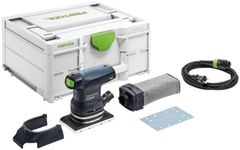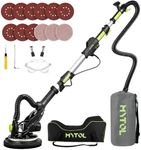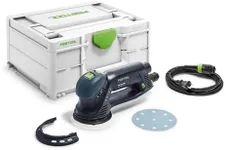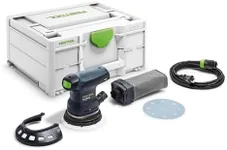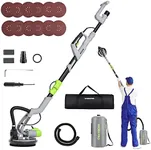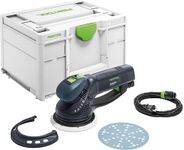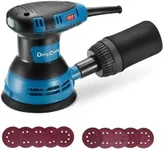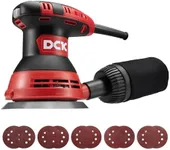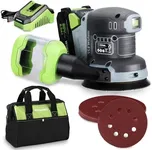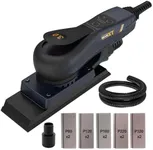Buying Guide for the Best Quiet Sander Machines
When choosing a quiet sander machine, it's important to consider several key specifications to ensure you get a product that meets your needs. A quiet sander can make your woodworking or DIY projects more enjoyable and less disruptive. Here are the key specs to look at and how to choose the best one for you.Noise LevelNoise level is measured in decibels (dB) and indicates how loud the sander will be during operation. This spec is crucial if you want to work in a noise-sensitive environment or simply prefer a quieter tool. Sanding machines typically range from 70 dB to 90 dB. For a quieter experience, look for sanders that operate below 80 dB. If you need to work in a shared space or during odd hours, a lower noise level will be more suitable.
PowerPower is measured in watts or amps and determines how strong the sander is. Higher power means the sander can handle tougher materials and larger projects more efficiently. Sanders usually range from 2 to 5 amps. If you are working on heavy-duty projects or hardwoods, opt for a higher power sander. For lighter tasks or softwoods, a lower power sander will suffice and may also be quieter.
SpeedSpeed is measured in orbits per minute (OPM) or revolutions per minute (RPM) and affects how quickly the sander can remove material. Variable speed settings allow you to adjust the speed based on the task at hand. Sanders typically range from 6,000 to 12,000 OPM. For detailed work or finishing, a lower speed is preferable. For rapid material removal, a higher speed is more effective. Choose a sander with adjustable speed settings for versatility.
Dust CollectionDust collection refers to the sander's ability to capture and contain dust produced during sanding. This is important for maintaining a clean workspace and reducing airborne particles. Look for sanders with built-in dust collection systems or the ability to connect to a vacuum. Effective dust collection not only keeps your work area cleaner but also contributes to a quieter operation by reducing the noise from dust dispersal.
WeightWeight affects the ease of handling and maneuverability of the sander. Lighter sanders are easier to control and less tiring to use for extended periods. Sanders typically weigh between 2 to 7 pounds. If you need to work on vertical surfaces or overhead, a lighter sander will be more comfortable. For flat surfaces or heavy-duty tasks, a slightly heavier sander can provide more stability and control.
ErgonomicsErgonomics refers to the design of the sander and how comfortable it is to use. Features like soft-grip handles, balanced weight distribution, and easy-to-reach controls can make a big difference in user comfort. Good ergonomics reduce fatigue and improve precision. If you plan to use the sander for long periods, prioritize models with ergonomic designs to enhance your overall experience.


